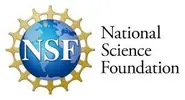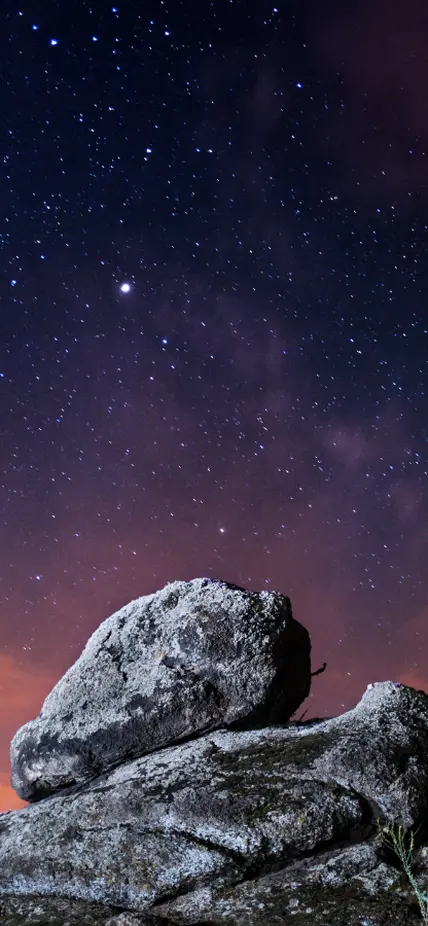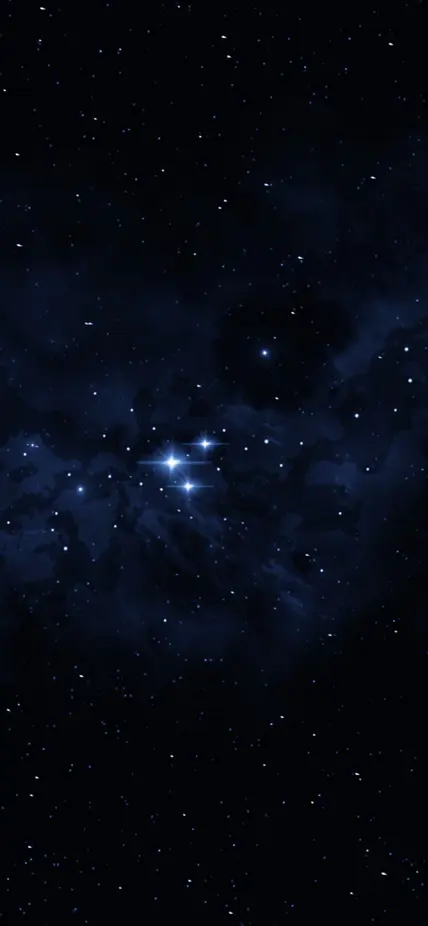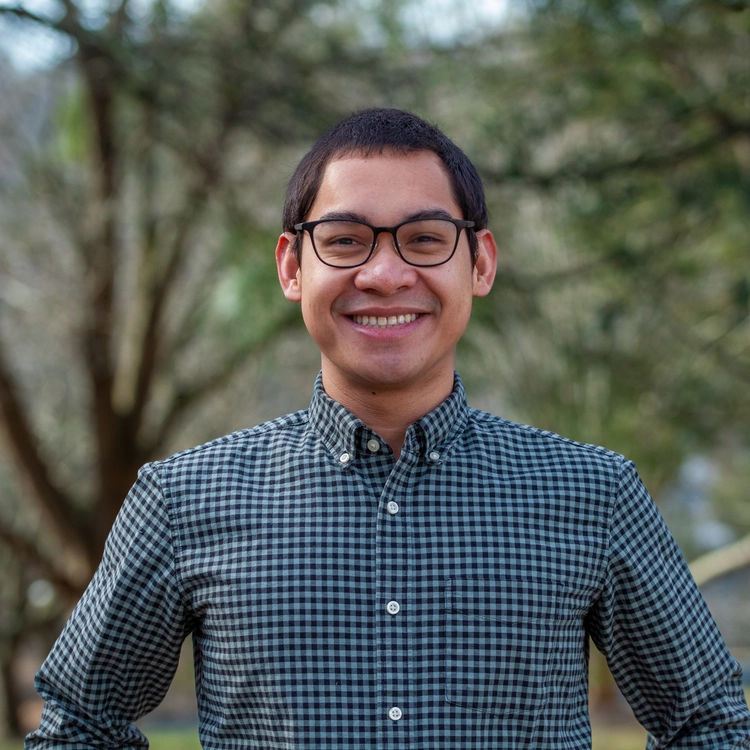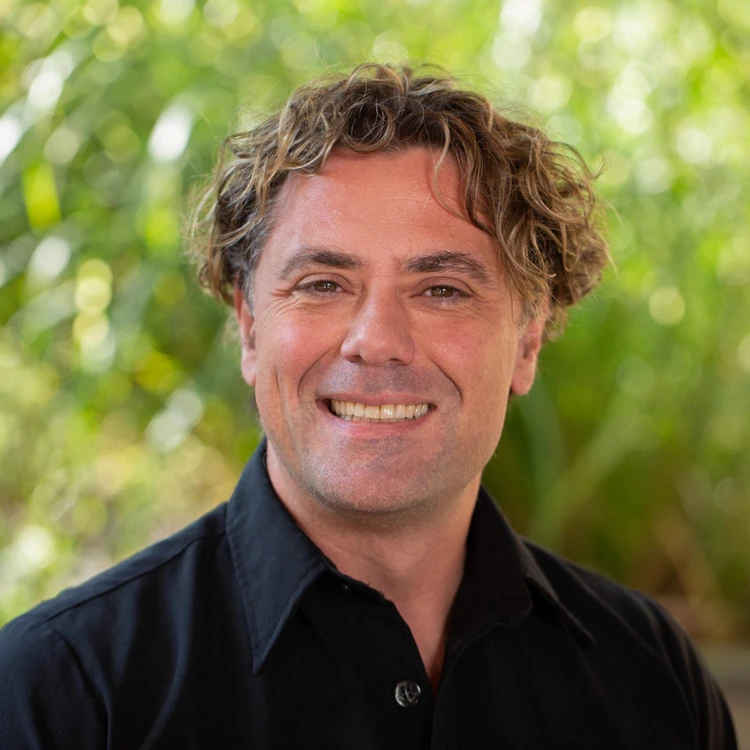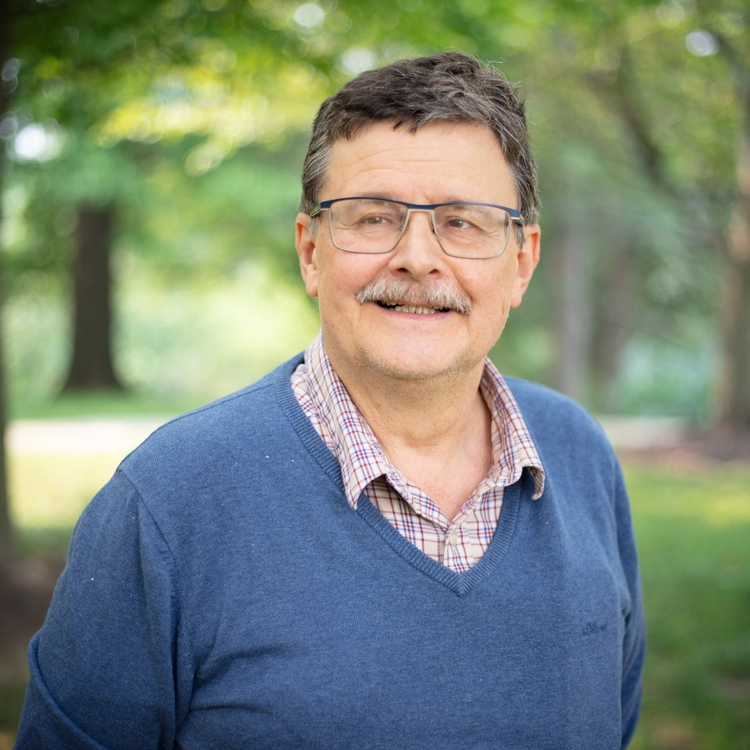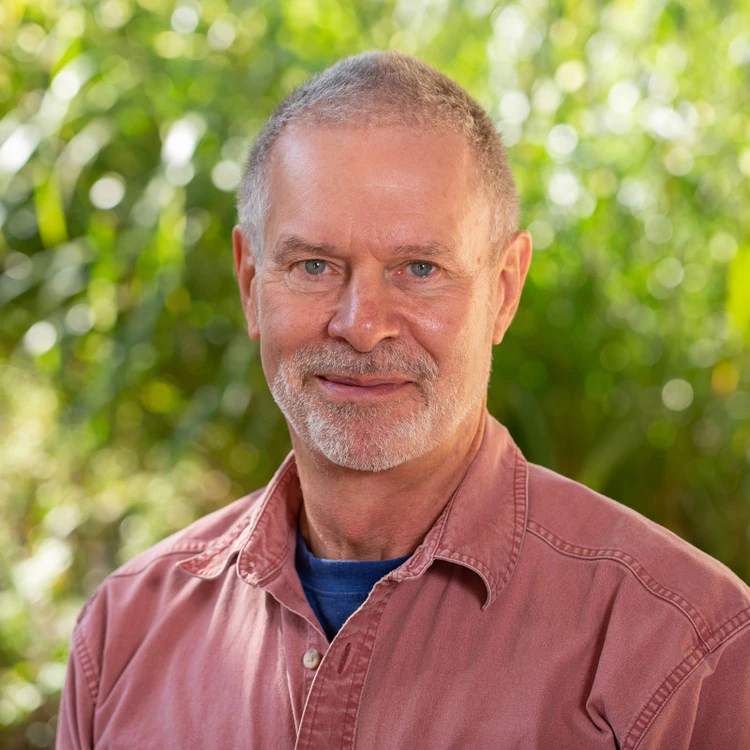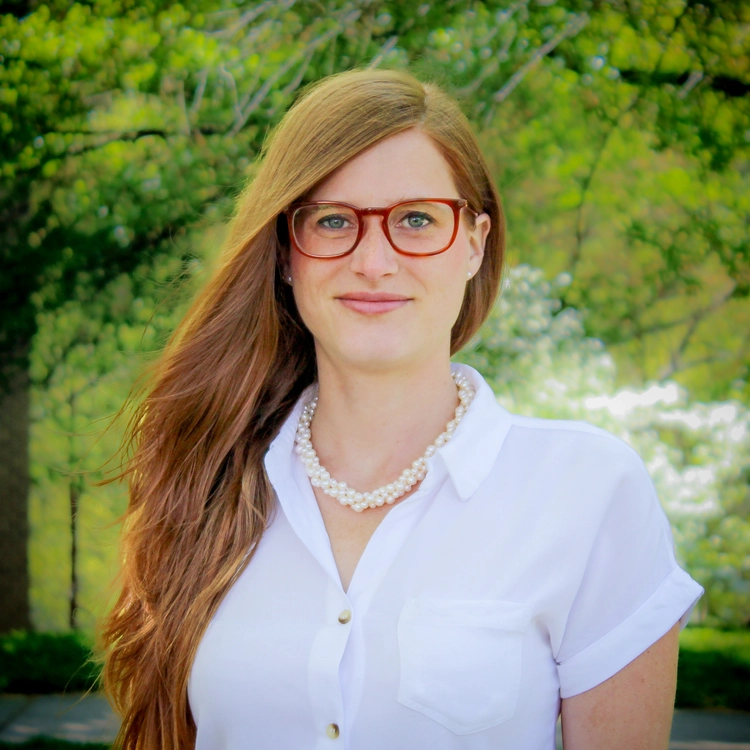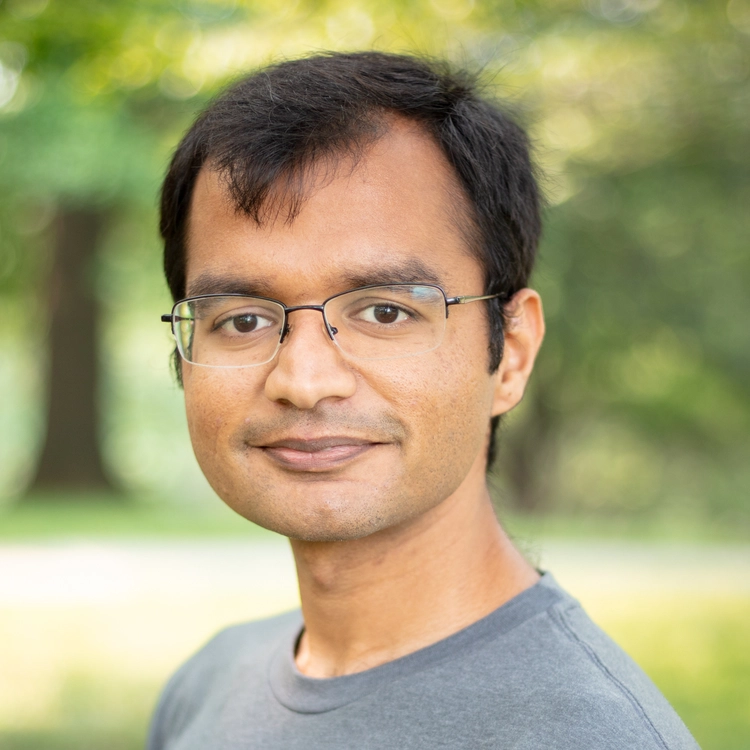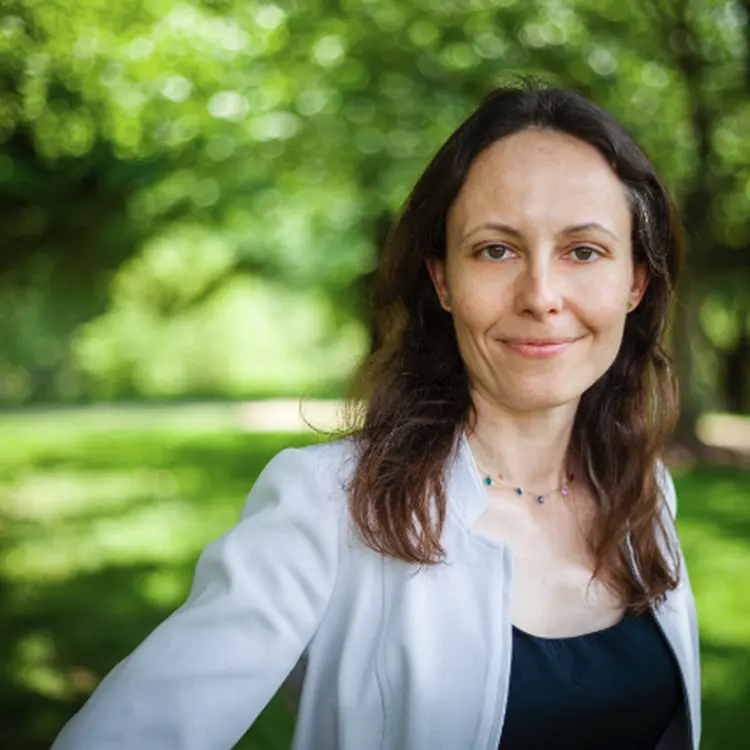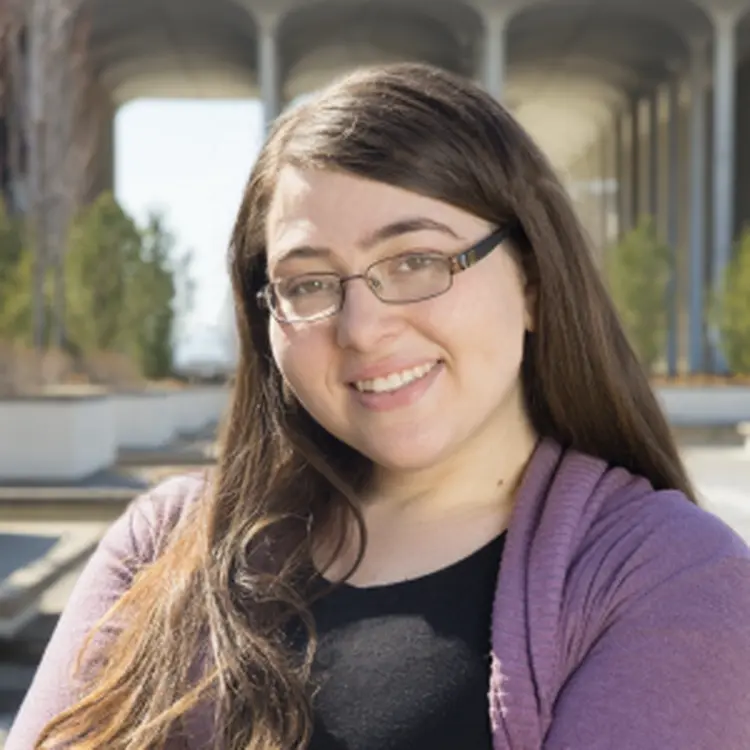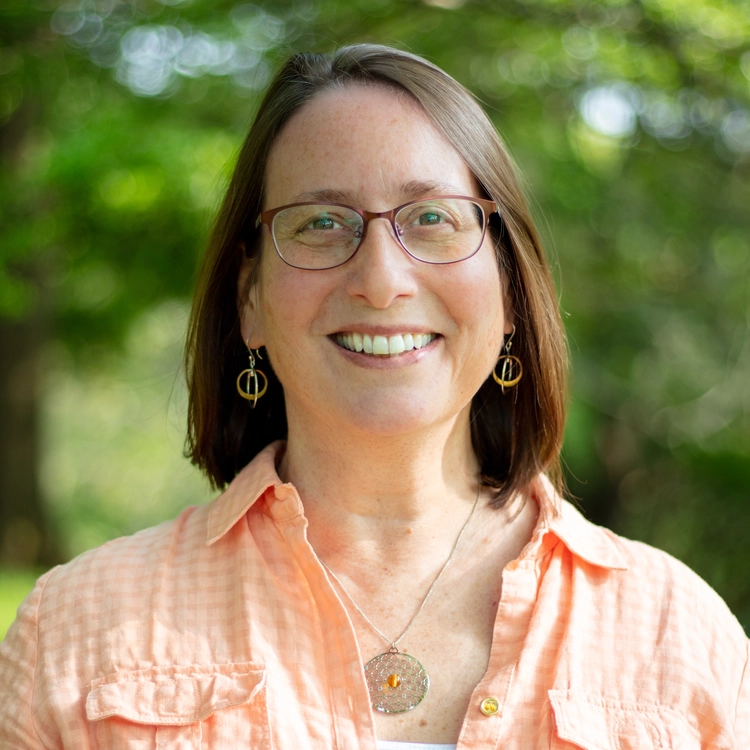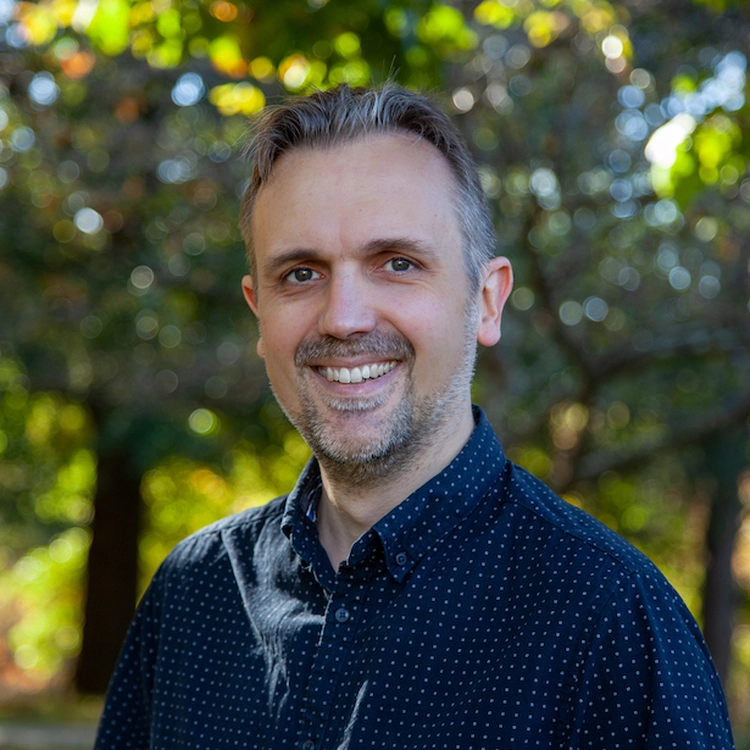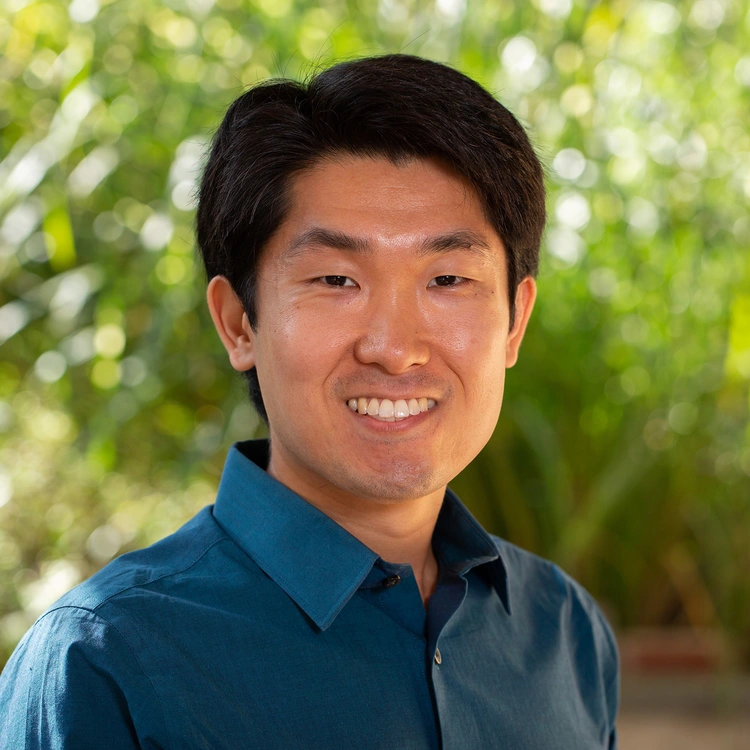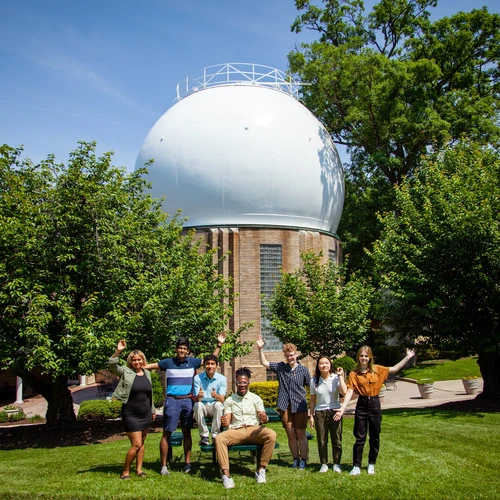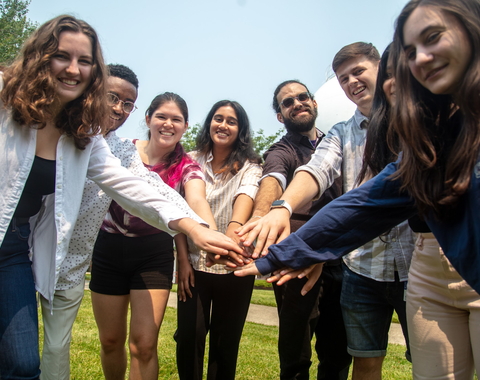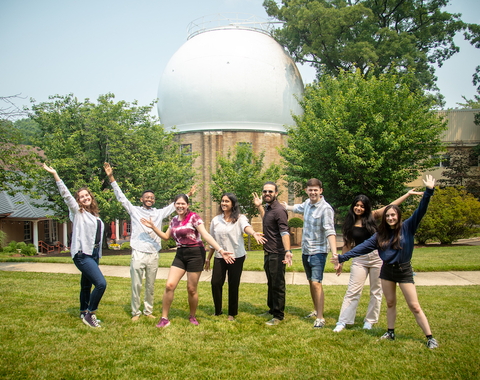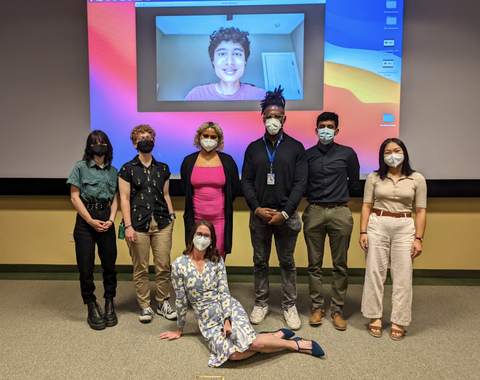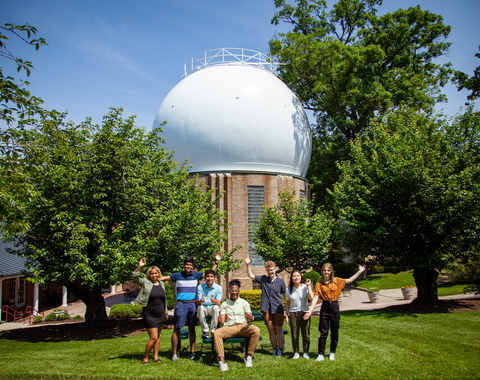Program Description
The Earth and Planetary Science Interdisciplinary Internships (EPIIC) program at the Carnegie Science Earth and Planets Laboratory (EPL) offers a unique opportunity for undergraduate students to gain hands-on experience in the fields of Earth, planetary, and astronomical sciences. We are particularly interested in applications from students attending institutions with limited local research opportunities (e.g., community and liberal arts colleges) and/or those who have not conducted research before.
During the 10-week program (June 3, 2024 - August 9, 2024), interns will work under the supervision of experienced researchers in the fields of astronomy, astrobiology, biogeochemistry, cosmochemistry, data science, experimental geochemistry/petrology, geophysics, isotope geochemistry, high-pressure mineral physics, mineralogy, organic geochemistry, and petrology.
Interns will work with their Carnegie mentor on an assigned research project with the ultimate goal of developing an original research finding that is suitable for presentation at a national scientific meeting during the following academic year. Interns are full members of their mentors’ research groups, participate in regular group meetings, and attend weekly seminars and social events at the EPL aimed at establishing a collegial cohort. EPIIC’s intensity and training will prepare its participants for graduate student life.
- Program Dates: June 3, 2024 - August 9, 2024
- Applications Due: January 29, 2024
- Decisions will be made in March 1, 2024. Replies requested by March 8, 2024.
Questions? Please contact program manager Dr. Dionysis Foustoukos at dfoustoukos@carnegiescience.edu.
- This is a paid, full-time position with a stipend of $6000, dispersed bi-weekly.
- Housing will be provided at American University. This includes full linen sets, Wi-Fi and cable access, shuttle service to/from the nearest metro stop, and complimentary access to the university’s fitness facilities.
- Interns will also have access to the Earth and Planets Laboratory facilities including the library and research facilities necessary for carrying out their research.
- Interns will be provided with necessary computing resources (e.g., a laptop, project-specific software).
- Interns can receive support for relocation expenses up to $300.
Please contact Dionysis Foustoukos at dfoustoukos@carnegiescience.edu with any questions or concerns.
Please note that applications should be sent using the form and not be emailed directly.
Participants in the EPIIC internship are expected to:
- Work on a research project under the guidance of a mentor.
Mentor(s) and mentee(s) sign a document after discussion that sets expectations and goals for their summer collaboration. The student carries out a research project crafted by the mentor(s), with the opportunity for modifications and/or additions based on the student’s skills and motivation.
- Acquire expertise in research methods while carrying out a research project.
Acquiring expertise in the research methods starts the first week the student is at EPL, and within several weeks, students can carry out independent work.
- Participate in professional development workshops.
The student participates in several research and science communication skills workshops that supplement the more topic-specific skills they gain from the research project and meets weekly as a group with the coordinator to provide research updates.
- Present results at a campus-wide symposium.
The oral presentations are styled after national meetings (AG, GSA, or AAS), and questions by the audience are encouraged. An abstract for the presentation is required, which will, if the student chooses, form the basis for an abstract to be submitted for a presentation at a national meeting during the following academic year.
- Participate in evaluations
Students and mentors participate in a series of beginning, mid-, and end-of-program evaluations to assess the mentor-mentee interactions, the progress of the students in gaining research skills, and overall experience in the full program.
- Meet weekly with the program coordinator to provide research updates.
- Must be an undergraduate student enrolled (part-time or full-time) in a degree program leading to a baccalaureate or associate degree.
- Students who are transferred from one college/university to another and are enrolled at neither institution during the intervening summer may participate
- Must be able to commit to the full 10-week program (June 3, 2024 - August 9, 2024)
- Research projects will be conducted on-campus and in-person.
- Preferences will be given to students who live in or go to school locally (DC, VA, MD).
- Strong interest in Earth, planetary and/or astronomical sciences
The online application form asks for information about you, your previous research experience, and your motivation for pursuing this internship. There are several short prompts (< 250 words.) We also ask for the contact information of one reference (but they do not need to submit letters).
Please read over the application first, and draft your response in a separate document before filling out the online form for submission.
Application Materials to Prepare:
- Curriculum Vitae
- Unofficial Transcript
- Reference Contact Information
- Short Essay Question Responses
Note: We believe academic environments should be places where diverse groups of people with a variety of viewpoints and ideas can thrive and work together. As such, we encourage applicants from underrepresented groups and backgrounds to apply. The Carnegie Institution is an equal-opportunity employer. All qualified applicants will receive consideration for employment and will not be discriminated against on the basis of gender, race/ethnicity, protected veteran status, disability, or another protected group status.
2024 Internship Projects
Subfield: Cosmochemistry
The origins of Earth’s volatile elements as complex organic molecules come from early Solar System Objects. Research conducted on campus has shown that primitive solar system objects could have been subjected to thermal processes altering their chemical composition. As members of the NASA OSIRIS-Rex Team, we analyze organic solids from the return mission from asteroid Bennu to understand their thermal history.
We see evidence that this material evolves through complex chemical kinetics. This project involved a series of hands-on experiments to understand the evolution of organic molecules under conditions of the Solar System's early evolution. The ultimate goal would be to decipher the processes that might have affected primitive Solar System Objects, such as the asteroid Bennu. The intern student will be trained in experimental organic geochemistry and in advanced spectroscopic analytical methods, such as Nuclear Magnetic Resonance (NMR) spectroscopy.
Subfield: Mineral Physics
The thermal history of the core and mantle and their dynamics is one of the most fundamental topics in geophysics. It is related to the processes of planetary accretion and differentiation, the time evolution of mantle and core temperatures, and the generation of Earth’s magnetic field. The thermal conductivity of materials in the Earth’s and planetary interiors is the key to understanding these phenomena. Thermal conductivity depends on the depth at which the materials reside and their composition and spin state.
These dependencies will be explored via investigations of materials of various composition/state and variable pressure-temperature conditions. In this project, the intern student will conduct direct measurements of the thermal conductivity of Earth’s minerals and alloys in a laser-heated diamond anvil cell at extreme pressure-temperature conditions representative of the Earth’s interior. The student will gain familiarity with optical experiments with diamond anvil cells, electron microprobe methods, and finite element calculations of heat flux propagation.
Subfield: Astronomy
The most common type of stars in the Galaxy are the faint and red M dwarfs. While we are now starting to find thousands of planets around these types of stars, massive Jupiter-type planets continue to be rare. This project is focused on the discovery, characterization, and formation of Giant Exoplanets around M-dwarf Stars (GEMS), an extreme regime of planet formation that has traditionally been hard to explain.
As part of this project, we will analyze data from NASA's TESS mission as well as ground-based telescopes to search for transiting giant planets and measure their size and masses. This will help us develop the tools to detect exoplanets, particularly those orbiting these cool and low-mass stars. This project would help develop the student's Python coding skills in data analysis and visualization while introducing them to the discovery and characterization of exoplanets. It could lead to co-authorship on a peer-reviewed scientific publication.
Subfield: Astronomy
Brown dwarfs, with masses between those of exoplanets and stars, serve as a critical link between the planetary and stellar populations. Although they formed like stars, they have temperatures and gravities that overlap with the population of extrasolar gas giant planets. Atmospheric models of both cool gas giant planets and cool brown dwarfs generally provide a poor fit to observations of these objects.
Studying brown dwarf atmospheres provides a promising path forward in understanding the reasons for these mismatches. In this project, the intern will use observations from ground-based telescopes to constrain the atmospheric compositions of brown dwarfs to better understand this intermediate population of objects and to investigate reasons for the model-data mismatches. The intern will gain skills in research computing, including data reduction and atmospheric modeling, as well as communication of scientific results.
Subfield: Astronomy
In this project, we will explore the end stages of planet formation by looking at young stars surrounded by dust (debris disks) created by the collisions of planetesimals analogous to comets. The intern will work on data from the MagAO-X instrument. The instrument is an extreme adaptive optics system on the Magellan telescope that produces images at visible wavelengths. Extensive computing in Python is necessary to take the raw MagAO-Xdata into astronomically useful images.
There are considerable multi-wavelength data on disks in hand already, which will allow the intern to explore various aspects of the data and the science -- from working on improved data reduction techniques to placing upper limits on planets that could be within the disks to studying the spectrum of light scattered off of the dust. The intern student will be mentored in Python programming, image processing techniques, and the complementary use of observations and modeling.
Geophysical measurements are used to probe the interior of our planet. For example, electrical observations reveal regions of high electrical conductivity beneath subduction zones, likely indicating slab dehydration and melting processes at depth. The interpretation of these field anomalies requires knowledge of the electrical properties of hydrous mantle rocks. These properties can be measured in the laboratory, under relevant pressure (P) and temperature (T) conditions.
The goal of the project is to investigate experimentally the electrical conductivity of a hydrous mantle rock at the conditions of its dehydration and melting at depth. This project consists of the preparation of samples, electrical measurements at P-T using impedance spectroscopy in a press, chemical analyses of retrieved samples, and data interpretation. Results will shed new light on the role of aqueous fluids and hydrous magmas in the electrical structure of subduction zones.
Subfield: Geochemistry
Submarine volcanism affects the cycling of carbon between the Earth’s interior and oceans by introducing organic compounds of thermogenic, abiotic, and microbial origin to the overlying water column. As such, understanding the volcanic contributions of methane is profoundly linked to habitability in extreme environments and the origin of life.
The project will study the controls on the chemical characteristics of methane emitted from submarine volcanoes. This project will use laboratory experiments and theoretical models to explore the isotopic composition of methane and carbon dioxide. We will develop new methods of tracing the origins of methane with important implications for constraining its sources linked to fossil fuel exploration, atmospheric chemistry and bio-geosciences. The intern student will be trained in experimental and theoretical geochemistry, physical chemistry of geothermal fluids, and in handling solid, liquid, and gaseous samples.
Subfield: Mineral Physics, Data Science
Both natural and synthetic compounds in solid matter have atoms predominantly arranged in repeating patterns (motifs). We can discern properties of materials like organics, polymers, inorganics, and metal alloys both of natural and synthetic origin based on their structure. If the relationships between structures and their properties can be understood for all known compounds, we can gain insights into planetary evolution, organic matter potentially connected to previous life, or predict new materials for energy conversion and storage processes. Machine-learning methods can identify the structural characteristics and quantify the differences in motifs.
In this project, the student will first explore crystal structure data for both minerals and synthetic materials from the major crystallographic databases. On this basis, an algorithm for recognizing similar structural motifs found both in natural and synthetic compounds will be developed.
Subfield: Planetary Science, Data Science
What kinds of planets lie beyond the Solar System? In this project, we will develop a data-driven approach to characterize and classify the diversity of planetary objects in the cosmos. Using multidimensional exoplanet data (including mass, radius, temperature, age, chemical composition, host star type, orbital parameters, and dynamical relationship to other planets in the system), we aim to identify planetary kinds, thereby helping us create a more complex planetary analog to the temperature–luminosity diagram for stars.
In this project, the intern will learn to curate planetary data, utilize network science methods to explore planetary data, and develop machine-learning techniques to classify planetary kinds. As a result, the intern will gain experience in all aspects of planetary informatics, including data resource management, data visualization, data analysis, the interpretation of machine learning models, and the communication of key scientific findings.
Subfield: Geophysics and Geodynamics
Subduction zones are the locus of an incredible amount of geologic activity, including earthquakes, volcanoes, mountain-building, and tsunami generation. As the forces and temporal and spatial scales involved in these processes are so massive, computational models are essential tools for understanding long-term subduction zone evolution. However, these models are often complicated and difficult for non-experts to understand.
The goal of this project is to use modern, accessible software libraries to develop numerical models of subduction zones and provide them to the community. The work is ideally suited to a student who is enthusiastic about programming and learning about geodynamic modeling. Training will be provided in the underlying equations, and numerical discretization and the student will gain experience with cutting-edge software packages and development methods as well as have the opportunity to contribute to a tool likely to garner significant interest from the community.
Is there life beyond Earth? In 2023, Carnegie scientists pioneered a brand-new technique for searching for life in the cosmos based on machine learning. The accuracy and applicability of this biosignature technique rely on a breadth of data collected by a laboratory method called “pyrolysis–gas chromatography–mass spectrometry” (pyGCMS).
In this project, we will explore scores of new carbon-rich samples using pyGCMS. Not only will the student intern help build the training data set for the next-generation machine learning model, but they will also pioneer the analyses of enigmatic specimens from the early Earth that may contain remnants of ancient life. As a result, the intern will become an expert in the pyGCMS analytical technique, gain experience in data processing and data analysis, learn the basics of machine learning, and gain valuable experience in the communication of key scientific findings.
The Earth's record of meteorite/asteroid impacts is key to understanding the delivery of volatiles and carbonaceous materials to the early Earth.
The project would seek to utilize Raman imaging spectroscopy to map the distribution of carbonaceous materials within impacted terrestrial rocks and elucidate the nature of co-occurring minerals in these rocks. From these observations it may be possible to further analyze the minerals using microprobe and electron microscopy to understand the interaction of extraterrestrial carbonaceous materials delivered to the Earth during the impact process. Specific examples of carbonaceous species of interest that would be formed during the impact process are graphite, graphite whiskers, diamonds, and other high-temperature polymorphs.
Frequently Asked Questions
We are proud to say that the Earth and Planets Laboratory is officially an REU site!
From the National Science Foundation website:
NSF funds a large number of research opportunities for undergraduate students through its REU Sites program. An REU Site consists of a group of ten or so undergraduates who work in the research programs of the host institution. Each student is associated with a specific research project, where he/she works closely with the faculty and other researchers. Students are granted stipends and, in many cases, assistance with housing and travel. Undergraduate students supported with NSF funds must be citizens or permanent residents of the United States or its possessions. An REU Site may be at either a US or foreign location.
Because the project is funded through the National Science Foundation, EPIIC interns must be U.S. citizens, U.S. nationals, or U.S. permanent residents. If you do not meet this requirement, please reach out to the EPL HR representative Lauren Gilmer at gilmer@carnegiescience.edu to discuss other options.
Yes. We consider applications from current seniors, even if you would potentially be attending our program after you graduate. If this applies to you, please include a brief description of your plans in the "other information" part of the application (e.g. I’ve applied to graduate schools, I want to take a year off and work, I have a job lined up at Observatory X / Research Lab Y, etc.).
Our program is primarily intended for students pursuing STEM degrees and careers. We will also consider applications from students pursuing a degree in a related field like engineering or mathematics if there is a clear connection expressed to one of the research subfields on our campus.
Interns are required to stay at our accommodation at AU, which is a few miles from EPL by car, bus, and/or walking. If this presents any issues, please contact the program coordinator.
This program does not accept high school students, but there may be other opportunities available. Please contact the program coordinator with any questions.
